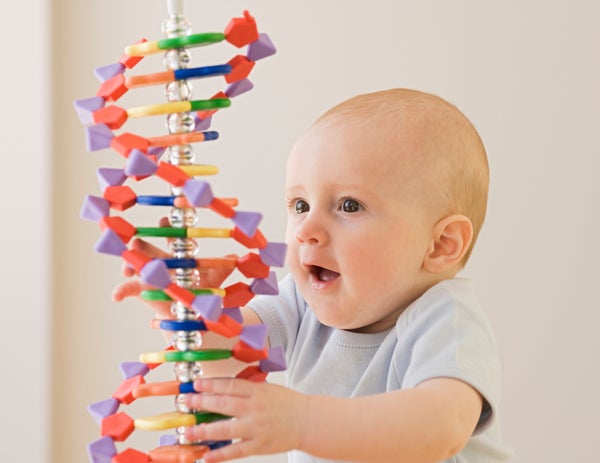This article was published in Scientific American’s former blog network and reflects the views of the author, not necessarily those of Scientific American
Watch young children digging in the dirt at the playground or watering plants at a community garden. What do you think they’re doing? In addition to having fun and getting messy, they’re also starting to grasp fundamental concepts about science and the natural world. Their hands-on experiences are laying the groundwork for deeper learning about environmental science and plant biology, critical thinking skills, problem-solving, and trial and error.
But these experiences aren’t just about creating foundations for future learning. In fact, as the new report STEM Starts Earlyreveals, it turns out that young children—those between birth and eight years old—are already capable of tackling some pretty impressive questions in the domains of science, technology, engineering and math (STEM). This doesn’t just mean that they can parrot the words “deoxyribonucleic acid” with a little practice; more profoundly, young children are in a near-continuousprocess of conducting evidence-based, systematic experiments to help them understand how their mysterious environments work.
Take, for example, a 2015 Johns Hopkins study about how babies learn to understand their surroundings. Scientists showed 11-month-olds a toy car that appeared to go off the side of a table and float in midair. Babies who saw this impossible scenario looked at the car longer and were more likely to explore it and try dropping it themselves than were babies who saw an ordinary car scenario.
On supporting science journalism
If you're enjoying this article, consider supporting our award-winning journalism by subscribing. By purchasing a subscription you are helping to ensure the future of impactful stories about the discoveries and ideas shaping our world today.
Similarly, babies who saw a solid object appear to go through a wall were more likely to hold the object and try banging it on the floor. As the authors put it, the babies “engaged in hypothesis-testing behaviors that reflected the particular kind of violation seen.” And when you think about it, it’s not all that surprising: How else do babies go from babbling and helpless to talkative daredevils in just two or three years? They do it through repeated experience—by developing expectations and testing them via trial and error, and even by practicing little experiments to see how far their new predictions about the world will take them.
If you’re a parent or spend time with toddlers, you’ve probably seen these experiments happening, even if you didn’t notice them: Your food-covered darling (child, niece, grandchild) accidentally sweeps her sippy cup off the side of the high chair during dinner and there’s a bang as it lands on the floor. After a few tears, she is comforted when you return the cup to her tray, but she eyes it suspiciously: “Where did the cup go? Why did it disappear? And where did that bang come from?” A few days later it happens again. This time she doesn’t cry. And when you return the cup to her tray, she immediately pushes it off the tray again. Whereas parents may be asking themselves, “Why is she doing this to me?” she may actually have a good reason. If we start with the results from the Johns Hopkins study, we might infer that this cute little kiddo is conducting a systematic physics experiment.
Once you recognize it the first time, you’ll start noticing it happening almost every minute of the day. Young children are voracious learners, tinkering and studying everything they can get their hands (or mouths) on. And that’s important because early STEM skills play a key role in later outcomes, and may even be integral to how children learn to learn. For example, early math skills predict later academic achievement more consistently than early reading or attention skills, and early engineering practices like building towers out of blocks can predict math achievement as far out as high school.
So instead of wondering what our youngest citizens are capable of, start asking yourself what you can do to support these budding scientists’ everyday studies. Fortunately, it turns out that you don’t have to be a STEM expert or invest in STEM kits and flash cards; one of the best things you can do is simply encourage children’s natural curiosity. Early STEM learning should focus on developing critical habits of mind, like asking authentic questions and pursuing them systematically and with persistence. You can model these practices by being curious and persistent yourself: Ask questions about the world around you and show them, through your own actions and reactions, that challenges are not failures but opportunities to learn and explore further. When you notice that a child is engaged in exploration or experimentation with her surroundings, talk about it with her and, if the child is old enough, encourage her to explicitly verbalize for herself what she’s testing.
Children are curious and engaged with their surroundings from the moment they are born but depend on us to help them develop those natural inclinations so they can become critical thinkers and persistent, lifelong learners.
So next time your little one tosses her sippy cup off the high chair—again, remember: it’s all in the name of science!
For more ideas on how to support early STEM learning, check out the National Science Foundation–funded report, STEM Starts Early, co-published by the Joan Ganz Cooney Centerat Sesame Workshop and New America.
